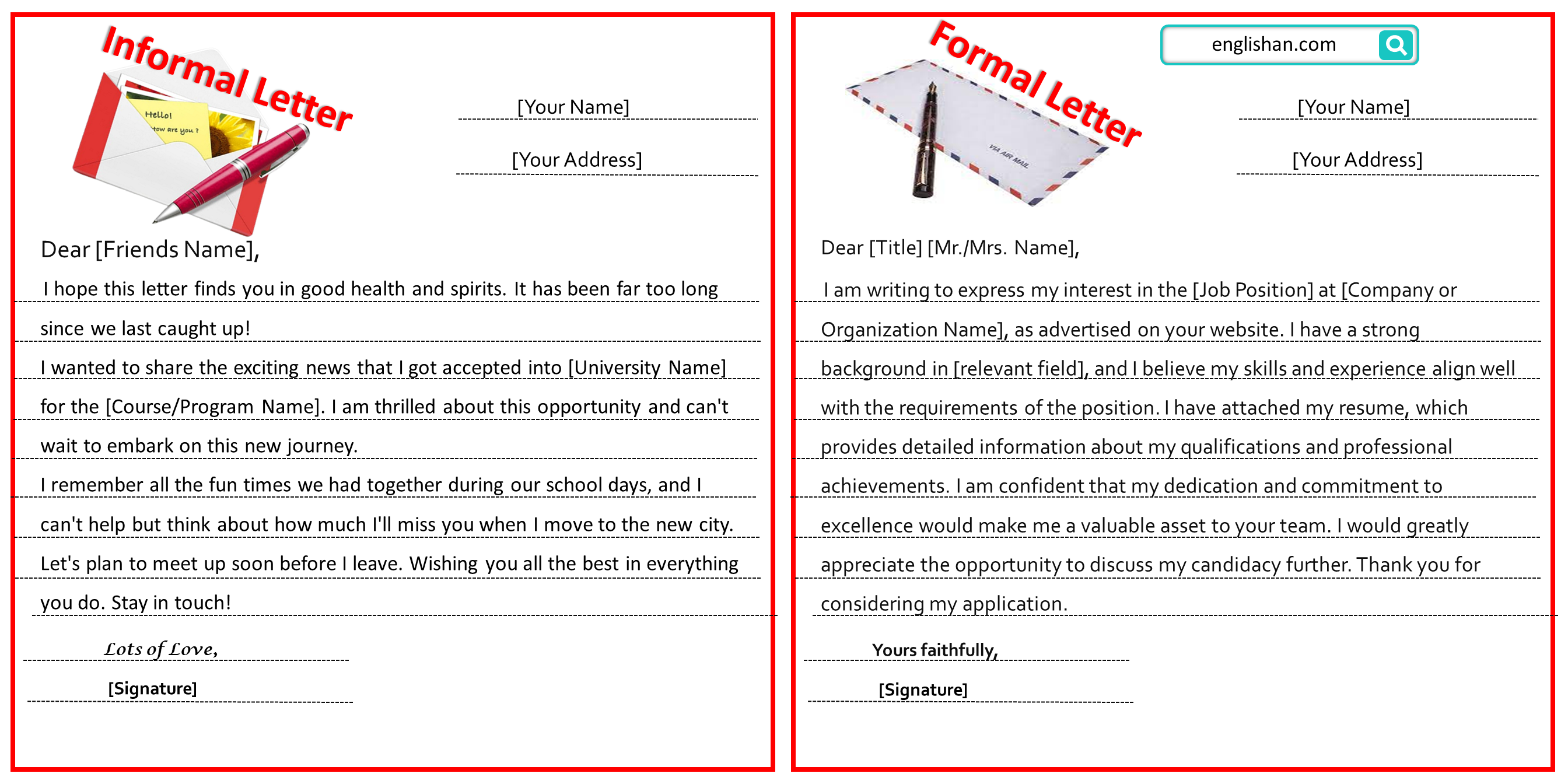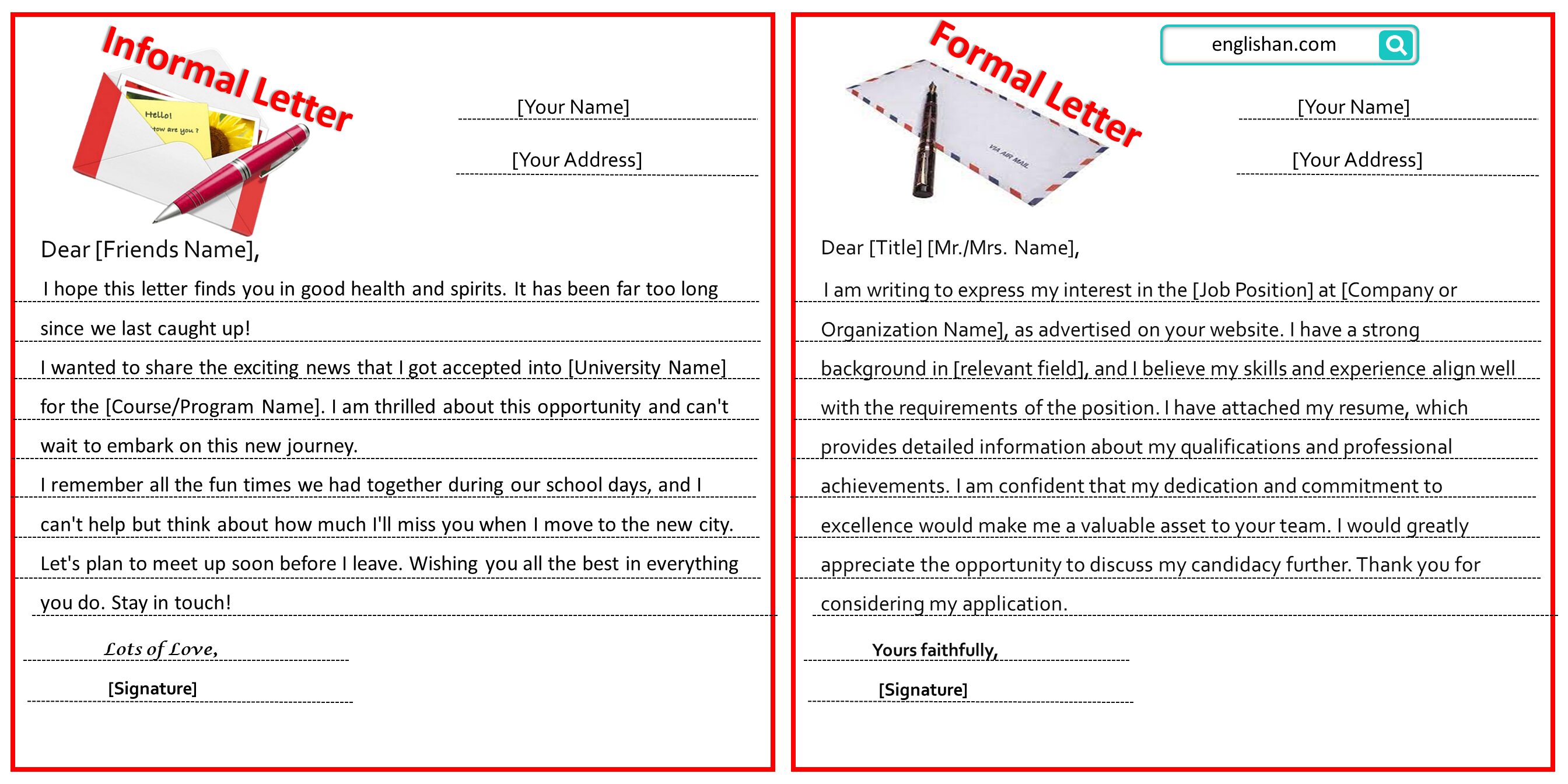

Welcome to our comprehensive guide on how to write a letter in English! Writing a letter may seem outdated in the digital era, but it can leave a lasting impression on the recipient. Whether you’re a student, a professional, or want better communication skills, mastering the art of writing a clear and effective letter is essential. We’ll cover both formal and informal letters with easy-to-follow instructions and practical tips. So, let’s get started and learn how to write a letter in English!
A letter is a written message that you send to someone to communicate your thoughts, feelings, or information. It’s an important skill for communicating with others, whether it’s for personal or professional reasons. To write a letter in English, start with a greeting like “Dear [Name],” then introduce yourself and explain why you’re writing. Share your thoughts or information in the main part of the letter, and end with a closing like “Sincerely” or “Best regards,” followed by your name. Letters can be informal, like the ones we write to friends and family, or formal, like the ones we use in business or school. Knowing how to write these types of letters with the right tone, words, and structure, is essential for making your letters effective and meaningful.
There are 6 basic parts of a letter:
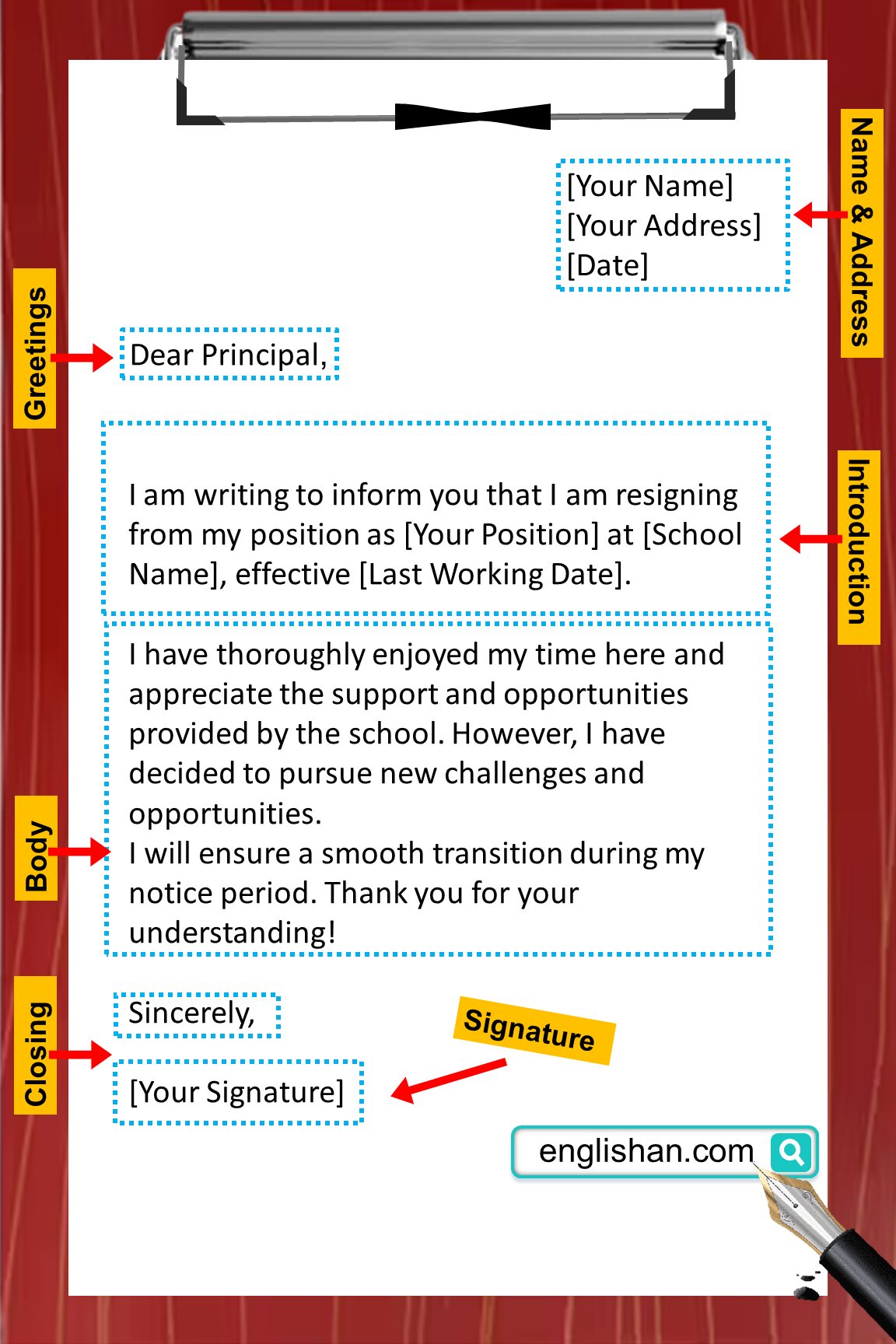
Heading: The top part of the letter that includes the address and the date.
Salutation (Greeting): How you start the letter, like “Dear [Name],“
Introduction: The beginning of the letter where you introduce yourself and the reason for writing.
Body: The main part of the letter where you share your thoughts, information, or message.
Closing: How you end the letter, like “Sincerely,” or “Best regards,”
Your Signature: Your handwritten name at the end of the letter.
To write a letter follow these 12 steps of writing a letter
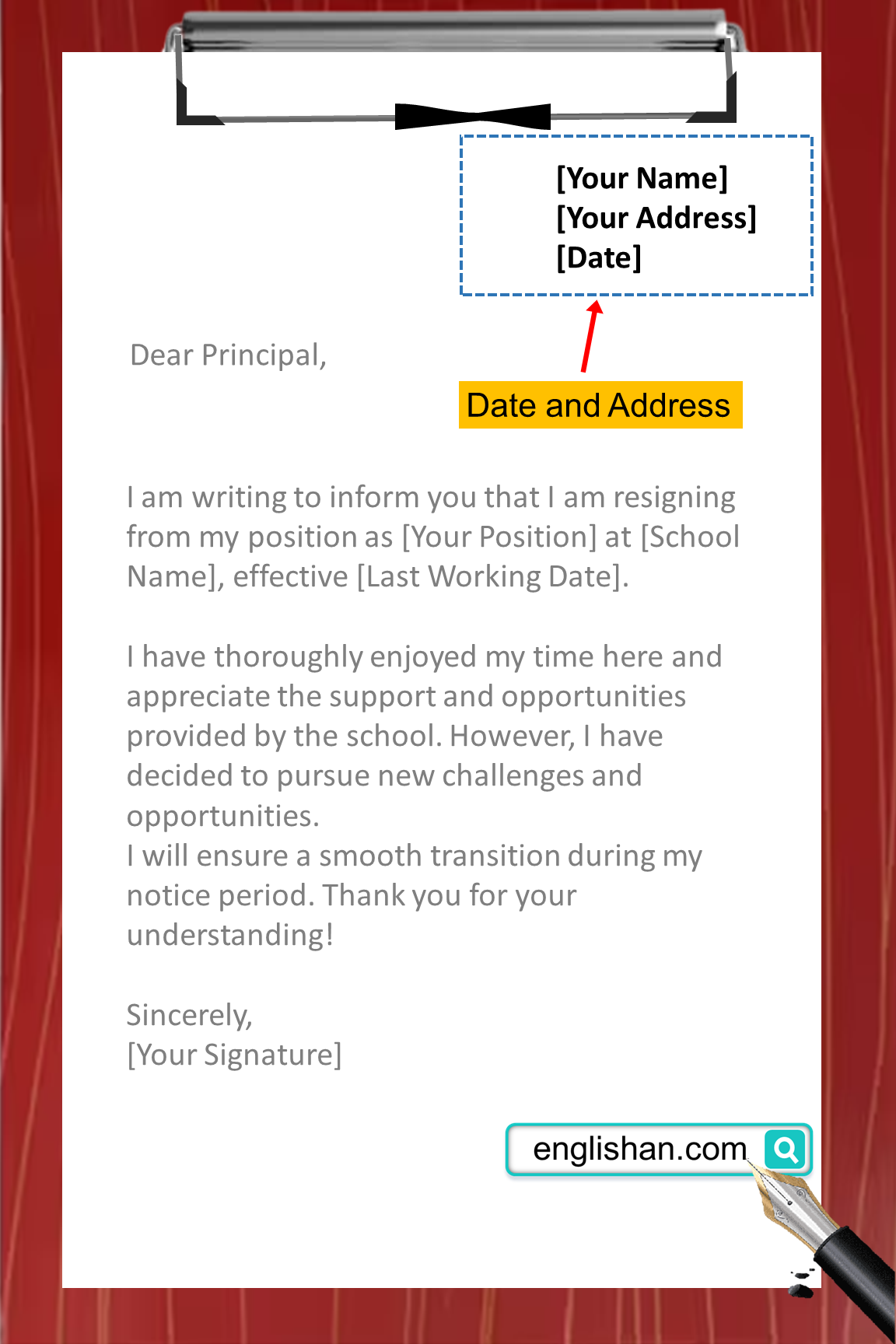
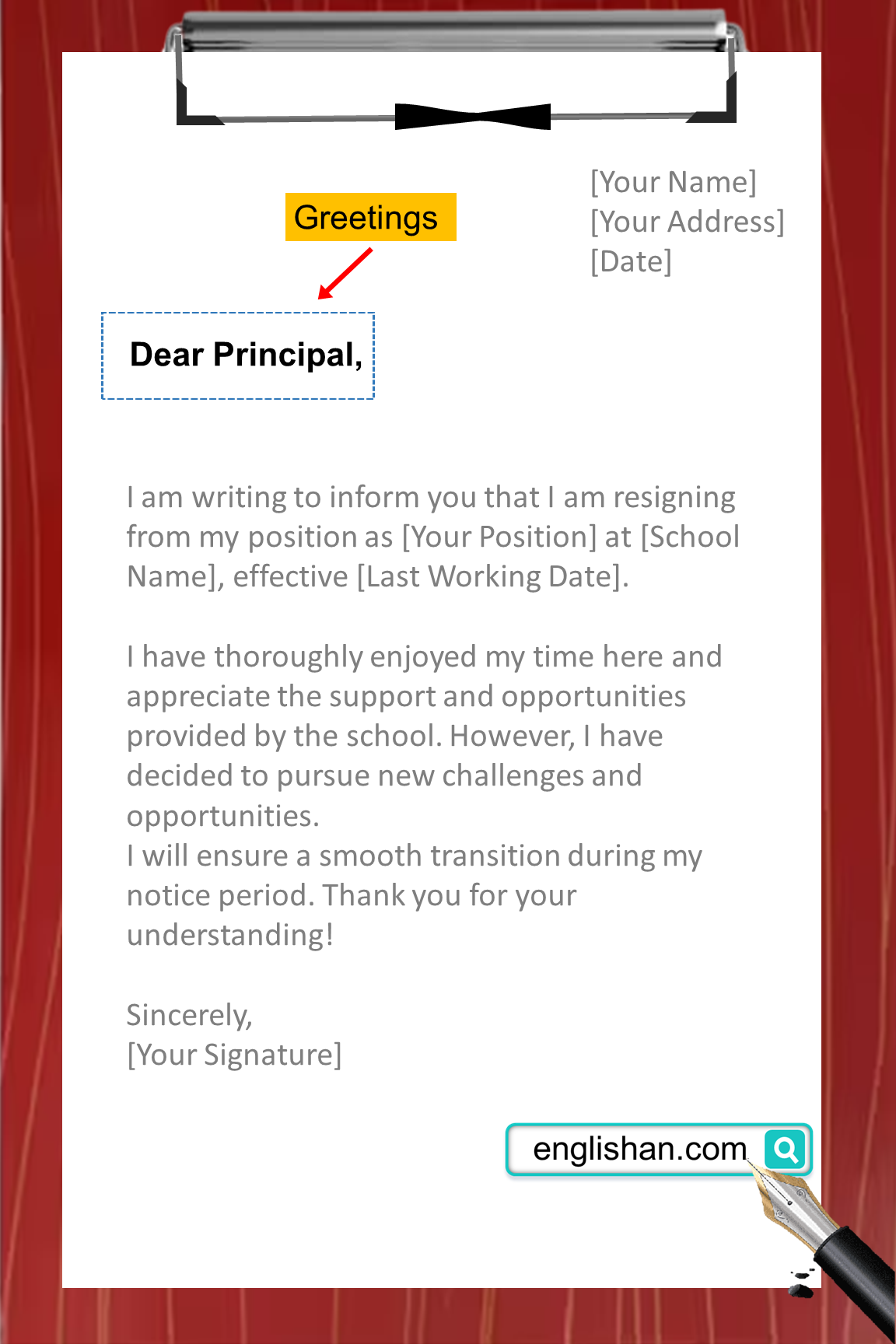
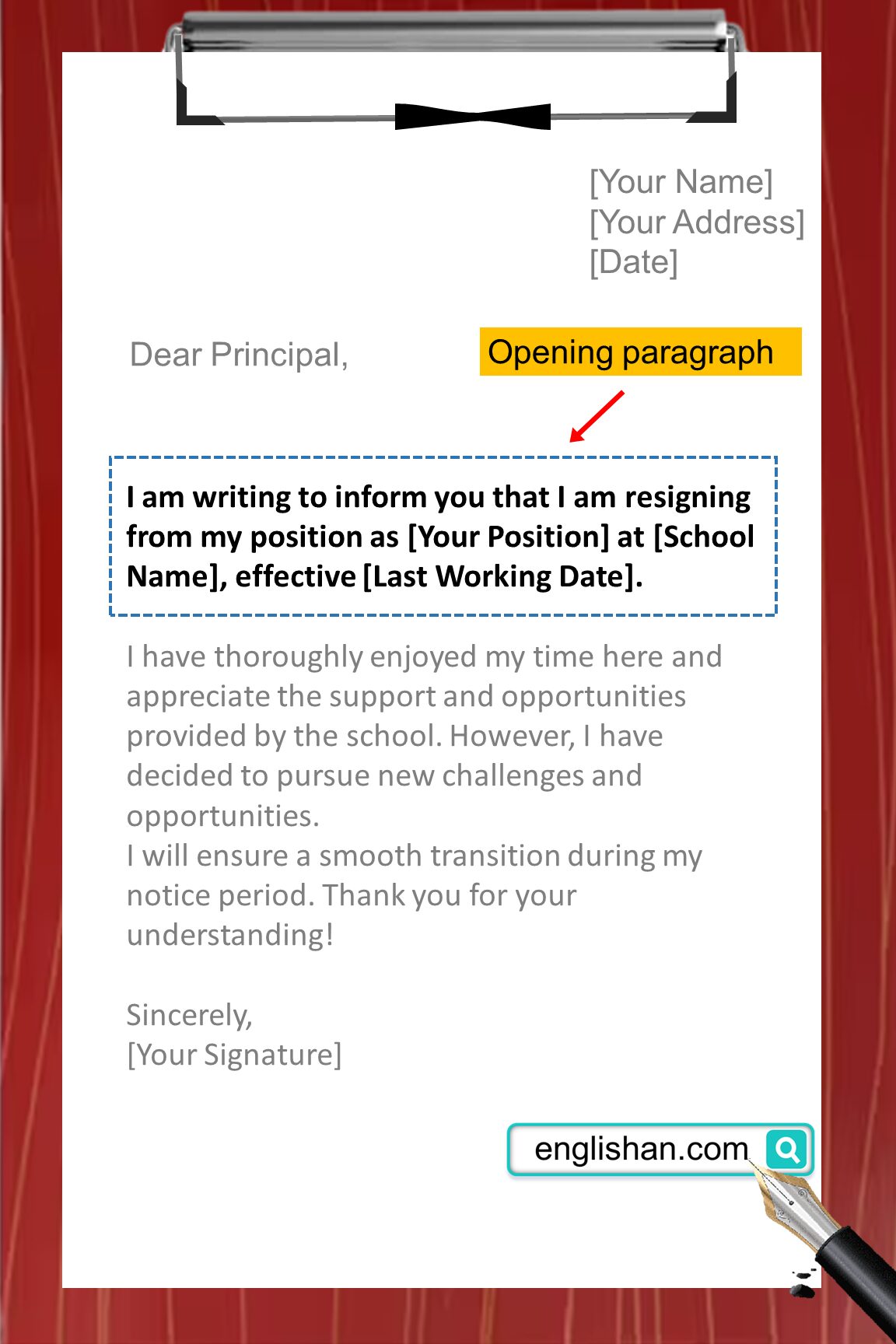
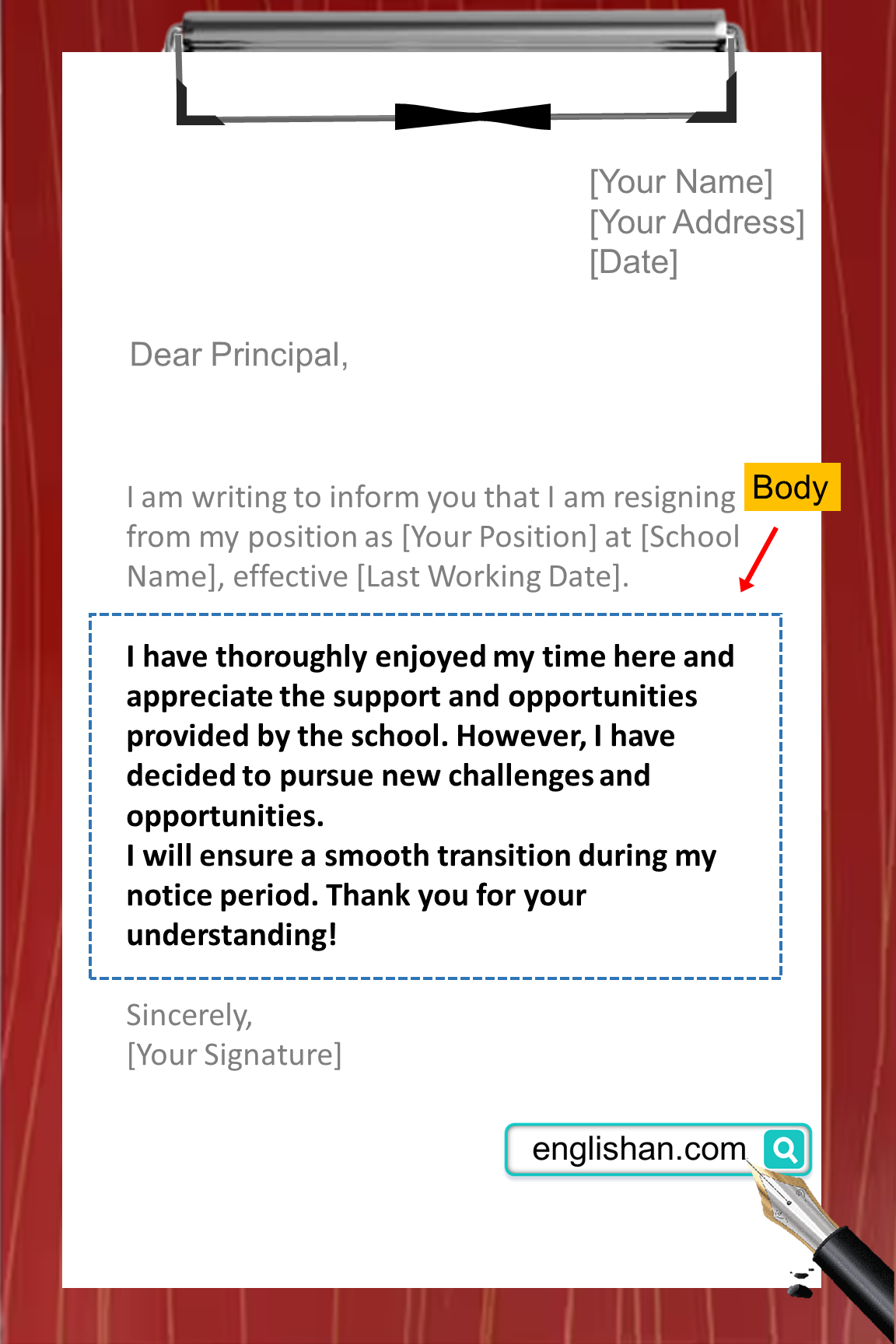
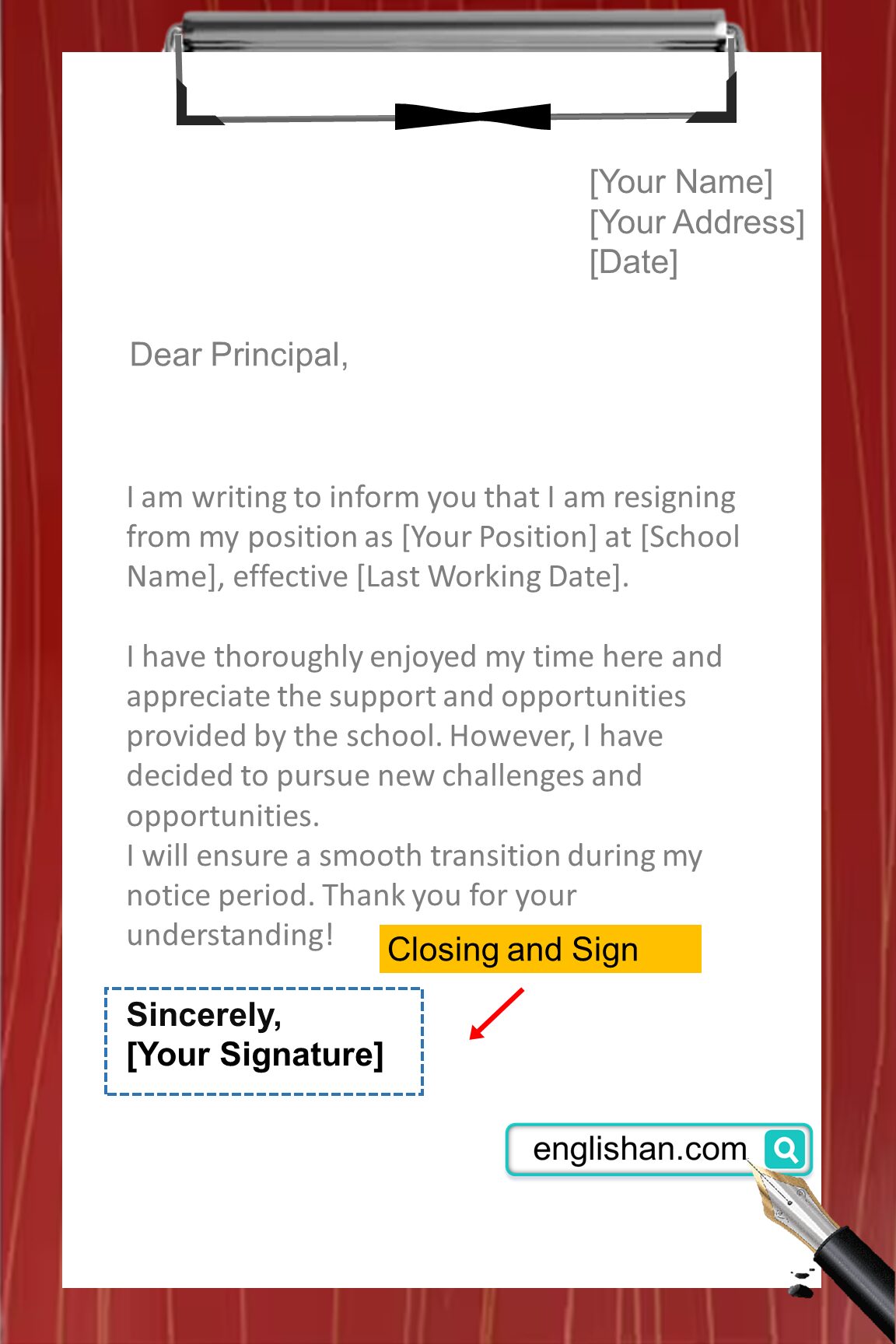
By following these steps, you can write a well-structured letter that effectively conveys your message to the recipient.
There are two basic types of letters and each type has its own specific format and purpose.
A formal letter is a type of letter that you write to someone you don’t know well, or to someone you want to show respect and politeness. It is used for official or professional purposes.
Characteristics of Formal Letters:
Examples of formal letters:
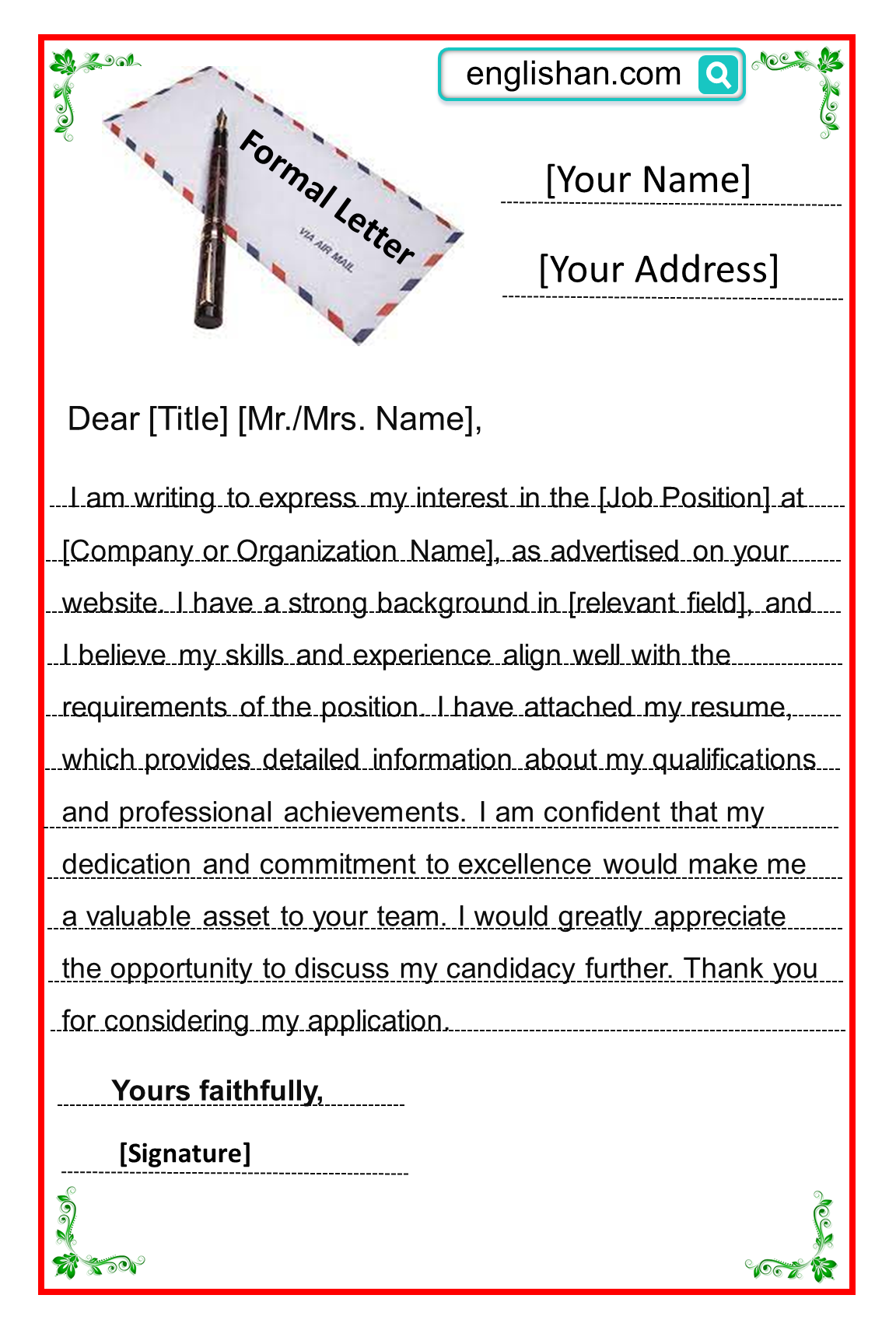
An informal letter is a type of letter you write to friends, family, or people you know well. It is used for personal communication and allows a more casual and friendly tone.
Characteristics of Informal Letters:
Examples of informal letters;
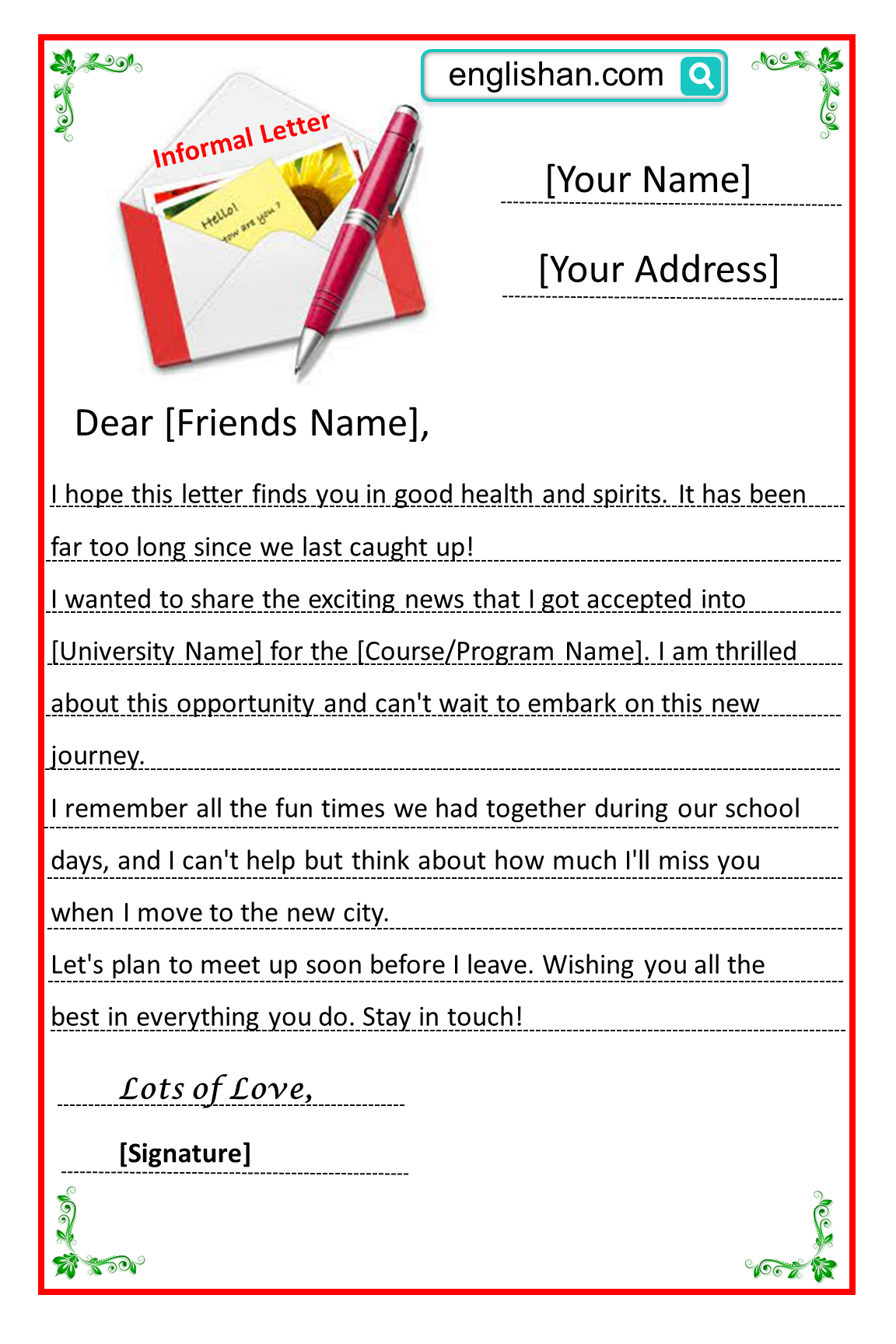
| Formal letter | Informal letter | |
| 1 | Used for official, business, or professional communication. | Used for personal communication with friends, family, or people you know well. |
| 2 | Addresses someone you don’t know well or want to show respect to. | Allows for a more relaxed and friendly tone. |
| 3 | Follows a strict format with headings, salutations, and closings. | Doesn’t require a specific format, but still needs organization and clarity. |
| 4 | Uses formal language and avoids slang or casual expressions. | Uses casual language and familiar expressions. |
| 5 | Usually written in a serious and professional tone. | May include personal stories, jokes, or emotions. |
| 6 | Examples include job application letters, business letters, and letters to authorities. | Examples include letters to friends, thank-you notes, apologies, and congratulations letters. |
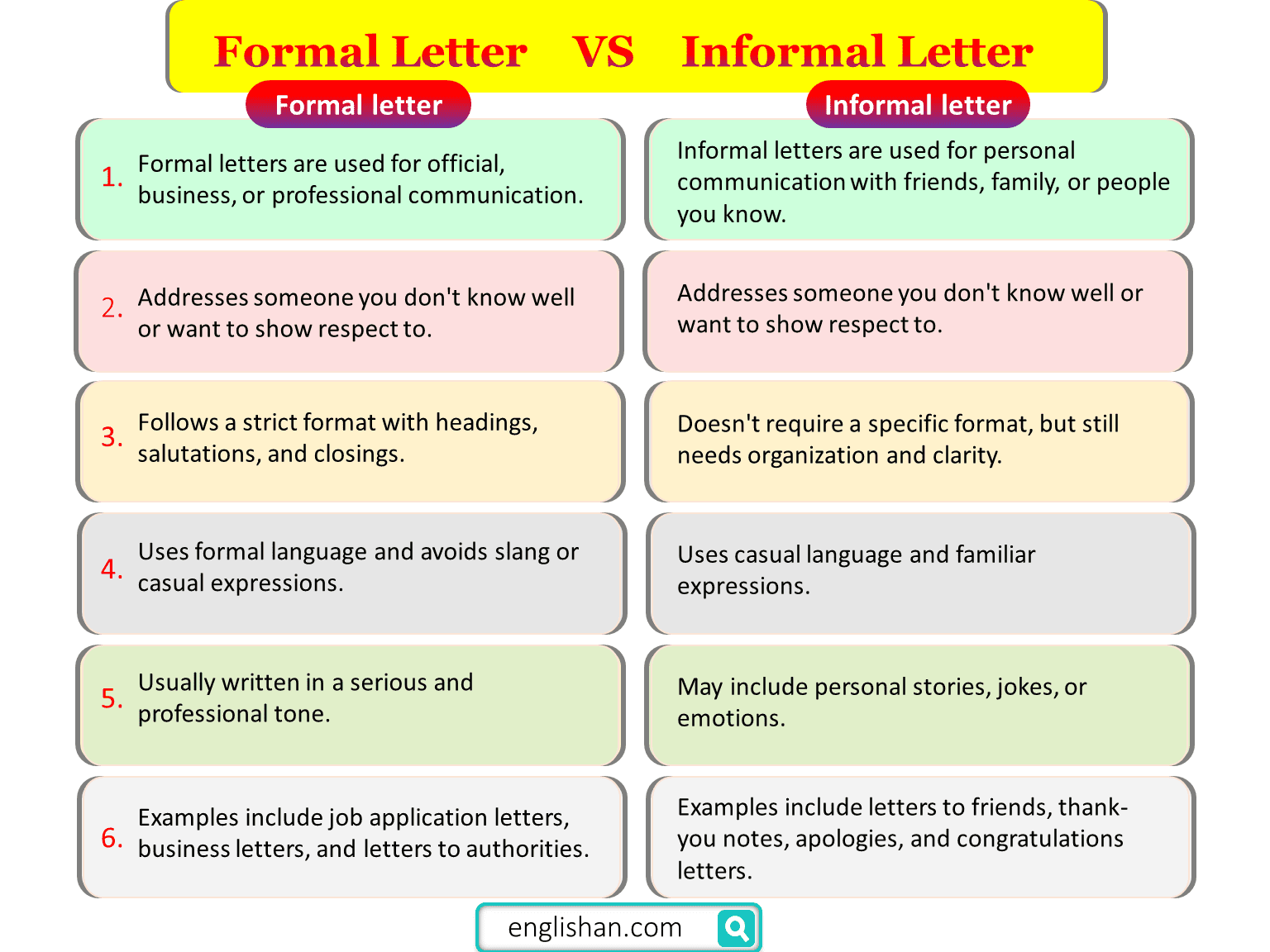
Be Clear: Use simple and easy-to-understand language so that the reader can easily understand your message.
Use Proper Structure: Follow the standard letter format with a heading, greeting, introduction, body, closing, and signature.
Address the Reader Politely: Begin the letter with a respectful greeting, such as “Dear [Name],”
Introduce Yourself: In the introduction, briefly tell the reader who you are and why you are writing the letter.
Stay on Topic: Keep your letter focused on one main subject or purpose to avoid confusion.
Organize Your Thoughts: Arrange your ideas in a logical order, using paragraphs to separate different points.
Use Examples: If possible, provide examples or anecdotes to clarify your message and make it more relatable.
Be Courteous: Use polite and friendly language throughout the letter.
Avoid Slang: Refrain from using informal language or technical terms that the reader might not understand.
Check Grammar and Spelling: Proofread your letter to correct any grammar or spelling mistakes.
Keep It Concise: Be brief and to the point, avoiding unnecessary details or long explanations.
Use Punctuation Correctly: Properly use punctuation marks like commas and periods to make your writing clear.
Stay Positive: Maintain a positive tone and avoid negative language.
Thank the Reader: In closing, express gratitude to the reader for their time and consideration.
